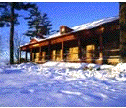











Dr. Goodarz Ahmadi
Director, TMFL
Clarkson U.
Potsdam, NY 13699
315-268-2322
ahmadi@clarkson.edu
|
Modeling the Chemical-Mechanical Polishing Process With circuit dimensions approaching to 0.35 mm and smaller, planarization has become a requirement for chip manufacturing. The targeted goal is to achieve planarity across the wafer a maximum surface elevation difference less than 0.15 mm or smaller. For this purpose, the chemical-mechanical polishing (CMP) has become a widely used technology for planarization of multilevel interconnects in microelectronic industry. The general procedure is to rotate a wafer against a polishing pad in the presence of pressurized slurry. The slurry typically consists of abrasive particles in an alkaline medium. It is now well recognized that the slurry feed rate, velocity, pressure, temperature, and PH, as well as abrasive particle size and material, and pad elasticity and hardness have profound effects on the effectiveness of chemical-mechanical polishing. Despite extensive usage of CMP, the microscopic processes that control the performance of chemical-mechanical polishing are far from being understood. Therefore, optimization and control of CMP cannot be properly achieved. The goal of this research project is to provide the needed fundamental understanding of the particle-scale removal processes that leads to the surface planarization during the chemical-mechanical polishing. We also plan to develop a reliable model for the rate of surface removal during the CMP process as a function of abrasive particle physical characteristics, chemical property of the slurry, as well as pad mechanical parameters. The result of the model will be useful for optimizing the chemical-mechanical polishing process in various applications. Funded by NYSTAR through Center for Advanced Materials Processing (CAMP) |
